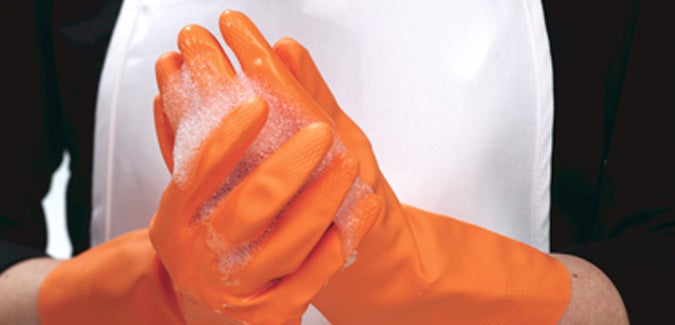A routine health department inspection can be one of the most stressful days of the year if you’re not prepared.
For those who are prepared, this should be just another day of serving safe food to customers. Health departments are required to inspect restaurants to ensure safe food-handling procedures are being followed. The frequency of visits is determined by local laws and the specifics of what inspectors are looking for.
Overall, they’re making sure safeguards are in place to protect food and consumers from contamination introduced by food handlers or cross-contamination by food and other sources in the restaurant. Following this inspection, a report will cite violations and give an overall rating for the restaurant. This report is made available to the public and could have a positive or negative effect, pending the final grade.
So what can you do to ensure you receive a passing grade?
Preparation makes perfect
Research your local requirements and expectations. Many requirements will be standard and will depend on your federal, provincial, municipal and regional health authorities. Formal food safety training and a food safety certificate may be a requirement for managers and staff. If required, it must be current and renewed within a certain time period, in accordance with local laws. The Codex Alimentarius, or Food Code, is an internationally accepted guide for best practices regarding food standards, guidelines and recommendations. Understanding the codex can help guide you in the best practices regarding food storage, handling, and preparation. This includes the principles of Hazard Analysis Critical Control Points (HACCP), which are used by inspectors.
Training your staff
Make sure training is comprehensive, consistent, and covers the following:
Hand hygiene. Teaching employees when and how to wash their hands can be one of the most important things you do. It’s one of the most common health violations; a person can host dangerous pathogens that can cause illness when transferred to food.
Post signs in hand-washing areas to remind employees of when and how to wash their hands; make sure you set an example:
□ When entering a food-prep area.
□ Before putting on gloves and between glove changes.
□ Before handling clean equipment and serving utensils.
□ Before handling or serving food.
□ After handling raw foods and working with ready-to-eat foods.
□ After handling soiled dishes, equipment, or utensils.
□ After returning to a food-prep area from any other area (including the washroom).
□ After taking a break, eating, drinking, or smoking.
□ After sneezing, blowing the nose, or coughing.
□ After touching the face, hair, or exposed parts of arms,
Temperatures. Educate staff about temperature guidelines for checking products when they arrive, are stored, and prepared. Post signs in all areas to ensure they know the correct temperatures as well as what’s acceptable and what can cause harm. Have logs and forms available so this information can be recorded and made readily available to the manager and inspector upon request. Don’t forget about temperatures for proper ware washing. It’s vitally important that equipment, plates, and utensils are washed at the correct temperature to destroy bacteria that may be present. According to the Government of Canada, about 1 in 8 Canadians are affected by food-borne illness each year. This results in about 11,600 hospitalizations and 238 deaths each year.
Cleaning. Stress the importance of hand washing and clean surfaces—not just those that come into contact with food. An analysis of Canada’s health inspection reports by CBC’s Marketplace revealed that hand washing was a significant problem in most cities, as was general kitchen cleanliness. For a more favourable health inspection, ensure that staff follow proper hand washing techniques, and that they follow a regular cleaning schedule for all surfaces in your establishment, including equipment, walls and floors.
Create a food safety culture. A food-safety culture will define what is acceptable for your employees and put emphasis on behaviors. Changing behaviors takes time, but setting goals and implementing accountability will drive the desired result. Food safety goals need to be specific and measurable, and managers and staff need to be clear about potential consequences of not following them. Reward positive behaviors, have plans for improvement, and set the standard yourself. Employees will look to leadership staff to set an example and hold others accountable. Making food safety a part of your operation’s culture will place high value on this important practice.
The bottom line? Careful attention to food-safety matters helps to keep customers safe, food quality high, and preserves your restaurant’s reputation. And, as a bonus, when the health inspector arrives, everyone on staff will be confident and prepared because it’s just another day.










